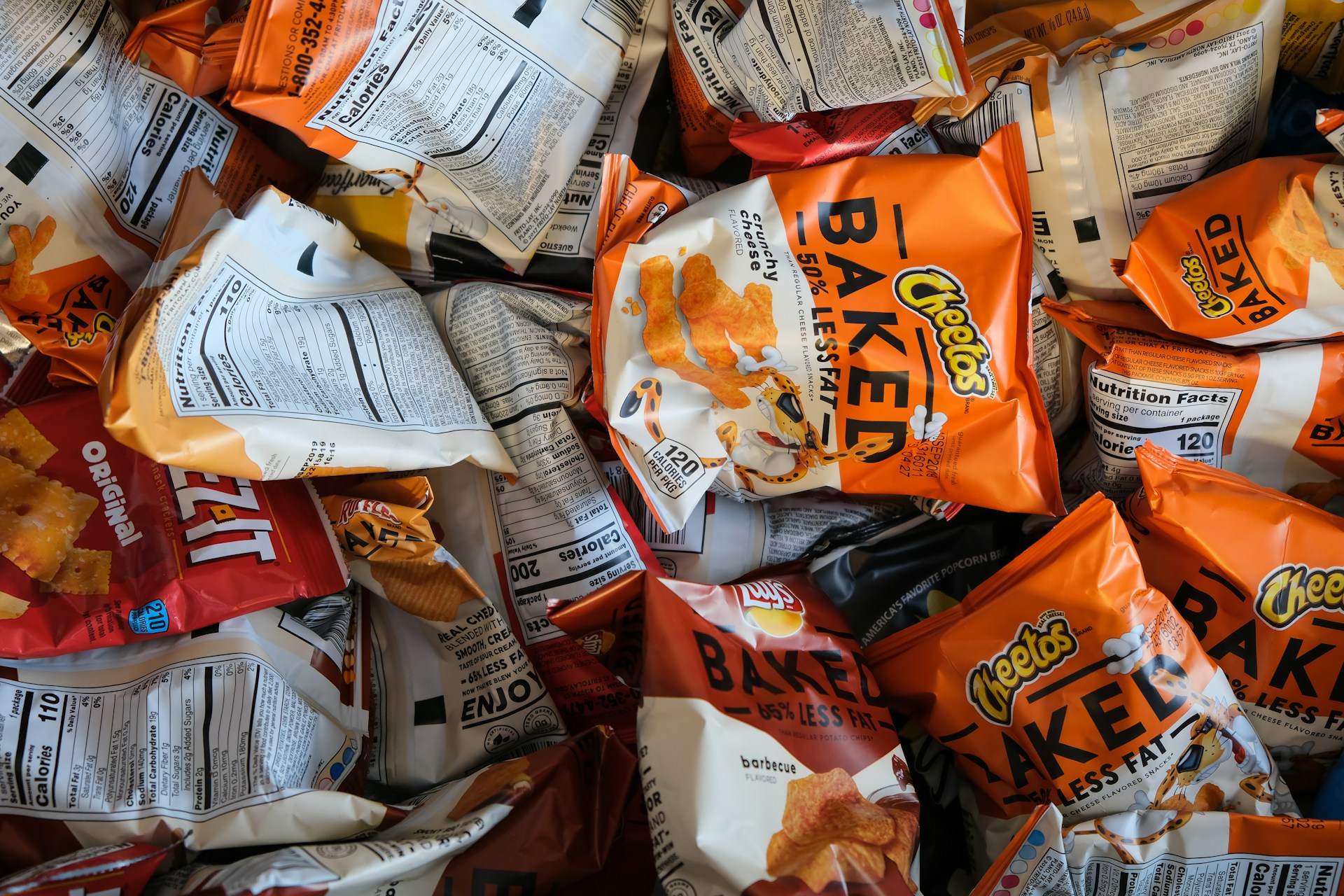
Ever pick up a product at the grocery store and feel confused by the ingredient list? You’re not alone. Many foods on store shelves have ingredient lists that just don’t make sense. Sometimes, what’s on the label doesn’t match what you expect. Other times, the list is so long or vague that you wonder what you’re really eating. This matters because what’s in your food affects your health, your wallet, and your trust in brands. Knowing which products have questionable ingredient lists can help you make better choices and avoid surprises.
1. Fruit-Flavored Yogurt
Fruit-flavored yogurt sounds simple. You expect milk, fruit, maybe some sugar. But check the label. Many brands use “natural flavors,” colorings, and thickeners instead of real fruit. Some even add gelatin or modified corn starch. The fruit you see on the package might be a tiny percentage of what’s inside. If you want real fruit, look for yogurt with fruit listed high up in the ingredients. Or buy plain yogurt and add your own fruit—this way, you know exactly what you’re eating.
2. Multigrain Bread
Multigrain bread seems healthy. The name suggests a mix of whole grains. But many loaves use mostly refined white flour, with just a sprinkle of other grains for show. The ingredient list might start with “enriched wheat flour,” which is just white flour with some vitamins added back in. True whole grain bread lists “whole wheat” or another whole grain first. If you want the benefits of whole grains, check the order of ingredients. Don’t let the word “multigrain” fool you.
3. Veggie Chips
Veggie chips look like a smart swap for potato chips. The packaging shows colorful vegetables. But the ingredient list often tells a different story. Many veggie chips are mostly potato starch or corn flour, with a little vegetable powder for color. Some brands add sugar, salt, and artificial flavors. If you want real vegetables, look for chips where the first ingredient is the actual vegetable, not starch or flour. Or make your own at home for a snack you can trust.
4. Imitation Crab Meat
Imitation crab, or “surimi,” is common in sushi and seafood salads. But it’s not crab. The main ingredient is usually white fish, like pollock, ground up and mixed with starch, sugar, and flavorings. Sometimes, the ingredient list includes egg whites, artificial colors, and even MSG. If you want real crab, check the label for “crab meat” as the first ingredient. Otherwise, know that imitation crab is more about texture and flavor than actual seafood content.
5. Bottled Green Tea
Green tea is known for its health benefits. But bottled versions often have more sugar than soda. Some brands add “tea solids,” flavors, and preservatives. The ingredient list might not even mention brewed tea as the first ingredient. If you want the benefits of green tea, brew it at home. Or, if you buy bottled, look for unsweetened versions with simple ingredients. Watch out for hidden sugars and additives that cancel out the health perks.
6. Cheese Slices
Pre-packaged cheese slices are convenient. But not all are real cheese. Some are “cheese products” or “processed cheese food.” The ingredient list can include milk, but also oil, whey, emulsifiers, and food coloring. These products melt well but don’t offer the same nutrition as real cheese. If you want real cheese, look for “cheddar,” “Swiss,” or another cheese as the first ingredient. Avoid anything labeled “cheese product.”
7. Peanut Butter Spreads
Peanut butter should be simple: peanuts and maybe salt. But many brands add sugar, hydrogenated oils, and stabilizers. Some products labeled “peanut butter spread” contain less peanut content and more fillers. The ingredient list might start with peanuts, but the next few items can change the nutrition profile. For the real thing, look for peanut butter with just peanuts (and maybe salt). Skip the spreads with extra oils and sugars.
8. Flavored Instant Oatmeal
Instant oatmeal is quick and easy. But flavored versions often have long ingredient lists. Sugar, artificial flavors, and preservatives are common. Sometimes, the “fruit” is just flavored pieces made from apple or pear with added color. For a healthy breakfast, consider buying plain oats and adding your fruit and spices. This way, you control the sugar and know what’s in your bowl.
9. Salad Dressings
Bottled salad dressings can be a minefield. Even “simple” flavors like ranch or Italian often have long lists of oils, sugars, gums, and preservatives. Some use “natural flavors” or “spices” without specifying their exact nature. The first ingredient is often soybean oil or water, not olive oil or vinegar. If you want a cleaner option, make your dressing at home. Or look for brands with short, clear ingredient lists.
Why Ingredient Lists Matter More Than Ever
Ingredient lists are more than just fine print. They tell you what you’re really eating. When the list doesn’t add up, you might be getting less nutrition and more additives than you think. Reading labels helps you avoid surprises and make better choices for your health and budget. It’s not about being perfect. It’s about knowing what’s in your food and deciding what matters to you.
What products have you found with ingredient lists that surprised you? Share your stories in the comments.
Read More
10 Ingredients Banned in Europe but Still in American Foods
These 6 Snack Brands Claim to Be Natural—Here’s What’s Actually Inside
The post 9 Products With Ingredient Lists That Don’t Add Up appeared first on Grocery Coupon Guide.







